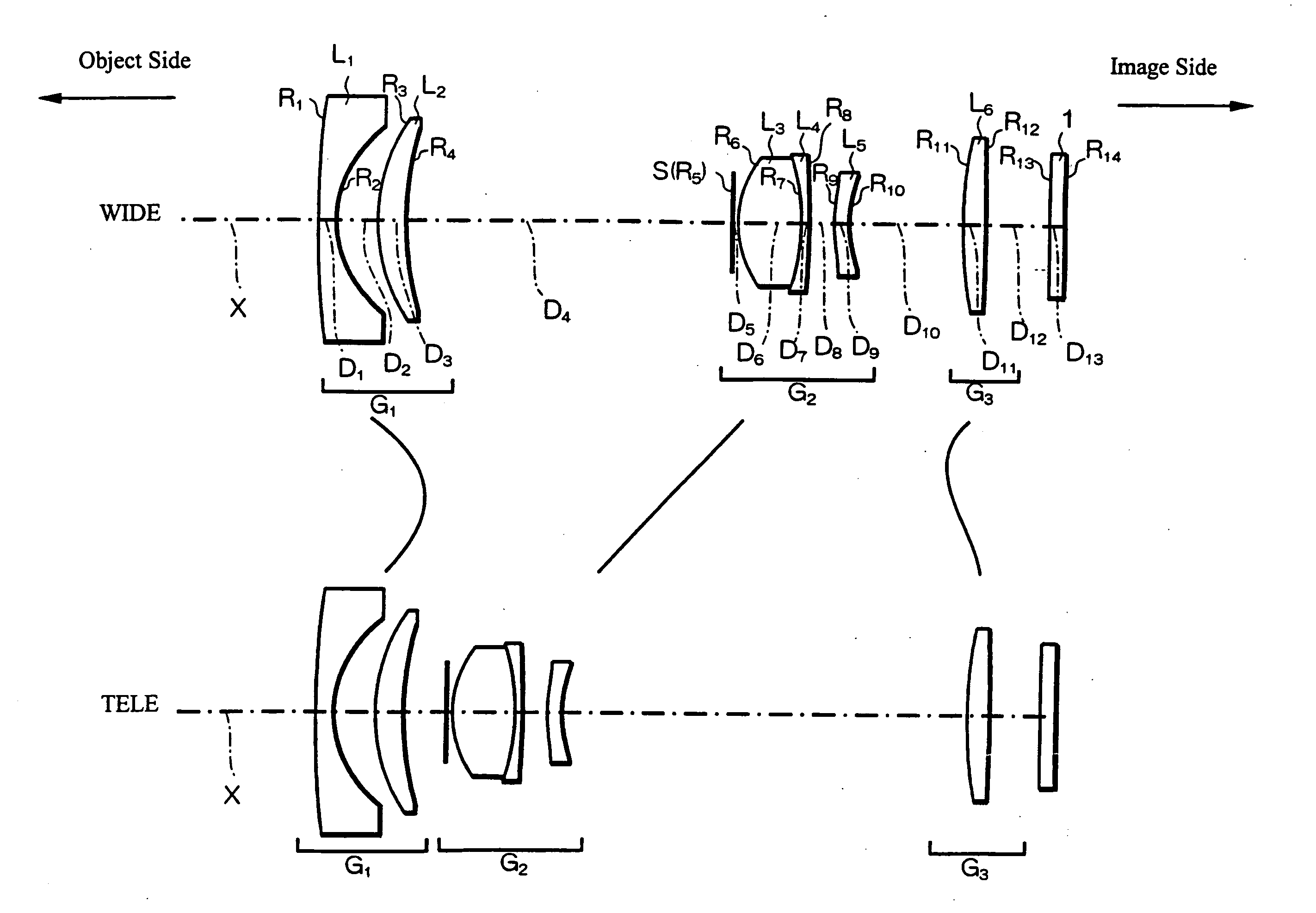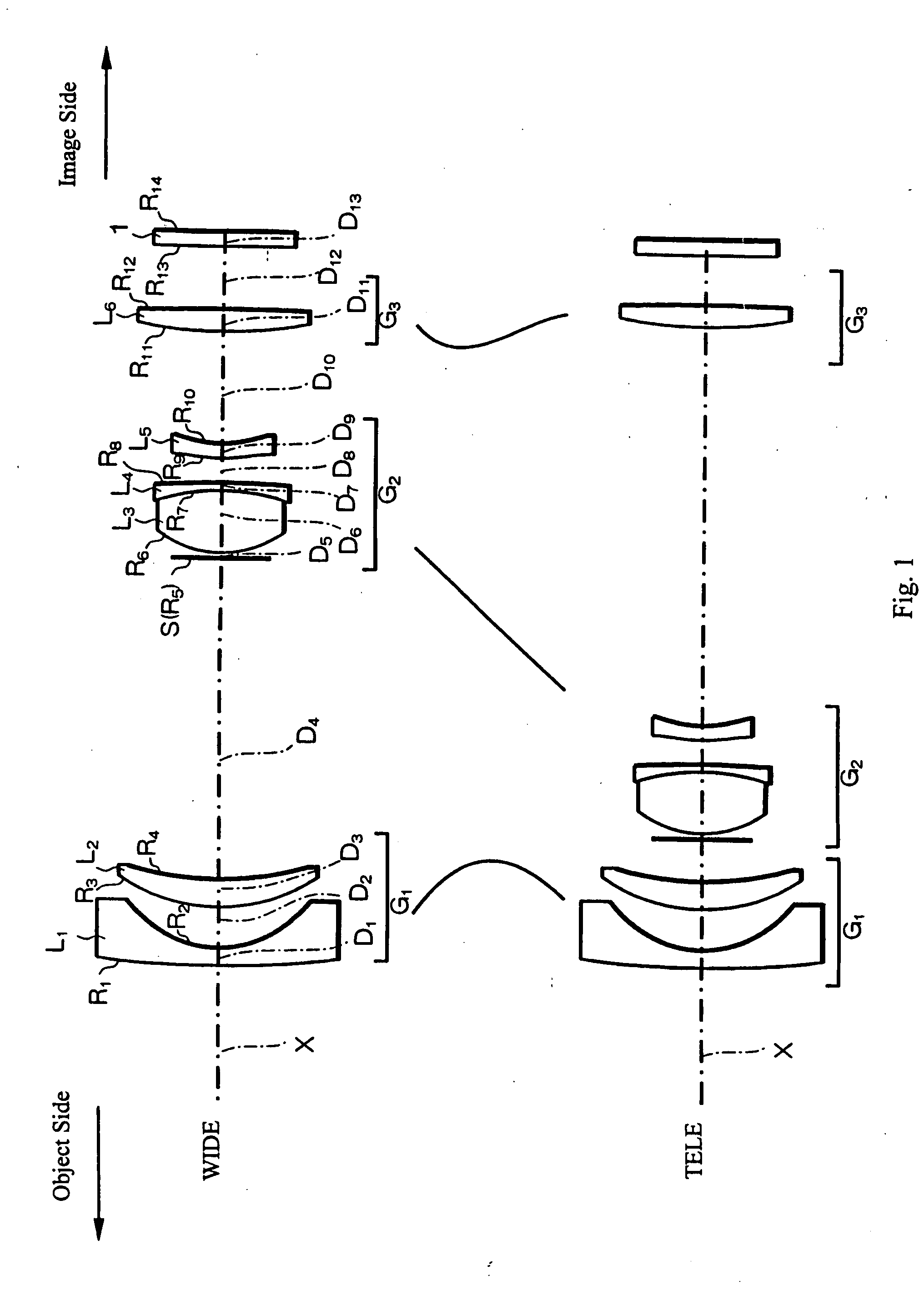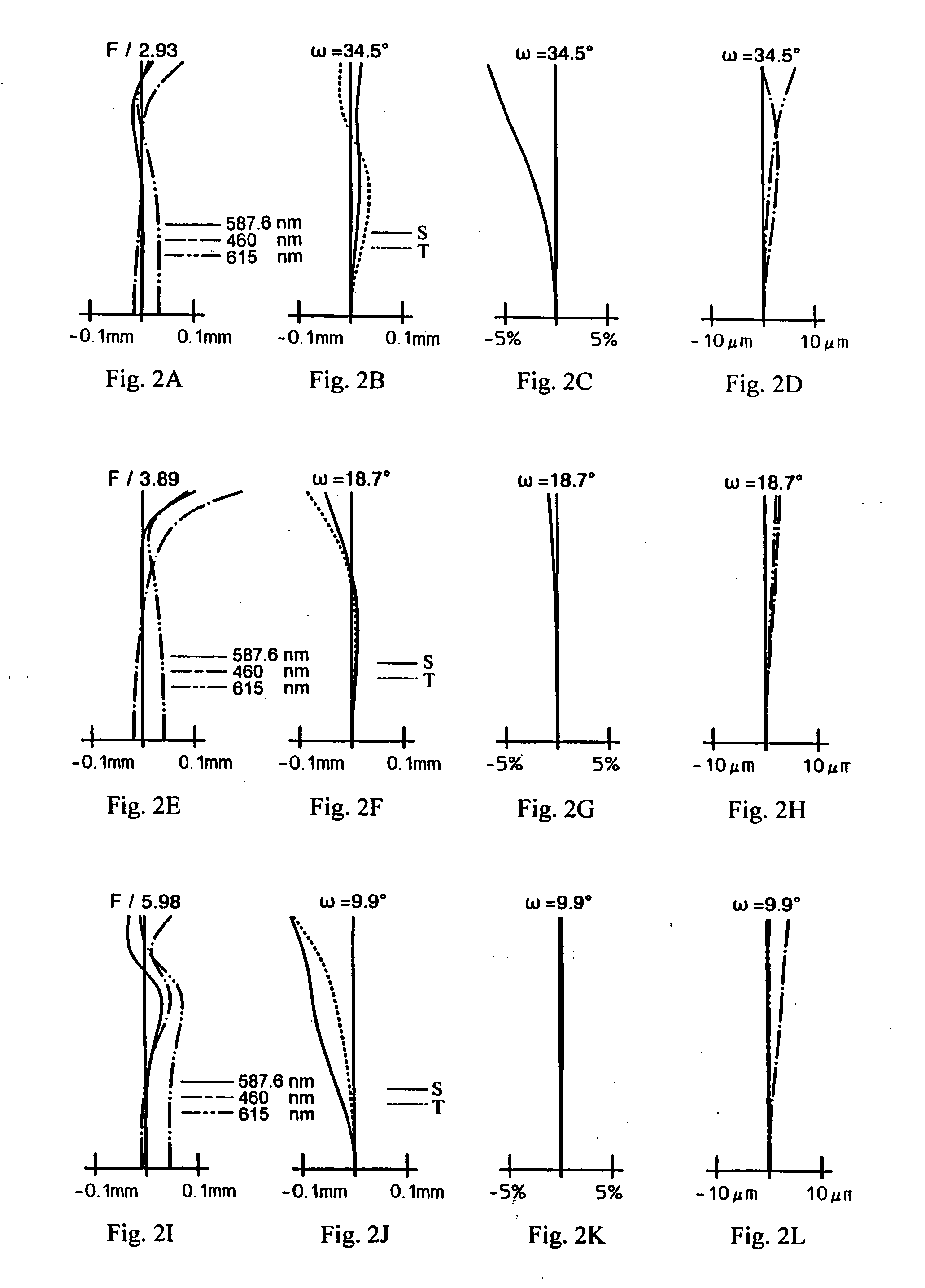Three-group zoom lens
a three-group, zoom lens technology, applied in the field of three-group zoom lens, can solve the problems of increasing the total length not meeting the demands of miniaturization, and affecting the accuracy of the zoom lens, etc., and achieve the effect of higher resolution
- Summary
- Abstract
- Description
- Claims
- Application Information
AI Technical Summary
Benefits of technology
Problems solved by technology
Method used
Image
Examples
embodiments 1 and 2
of the present invention will now be individually described with further reference to the drawings.
embodiment 1
In Embodiment 1, as shown in FIG. 1, the first lens group G1 is formed of, in order from the object side, a first lens element L1 of negative refractive power and a meniscus shape with its image-side surface being concave and having a greater curvature than its object-side surface, and a second lens element L2 of positive refractive power and a meniscus shape with its object-side surface being convex and having a greater curvature than its image-side surface.
The second lens group G2 is formed of, in order from the object side, a stop S, a third lens element L3 that is biconvex, a fourth lens element L4 of negative refractive power and having a meniscus shape with its object-side surface being concave and having a greater curvature than its image-side surface, and a fifth lens element L5 of negative refractive power and having a meniscus shape with its convex surface on the object side. The lens element L3 and the lens element L4 are joined together to form a lens component.
The ...
embodiment 2
Embodiment 2 is very similar to Embodiment 1 and therefore only the differences between Embodiment 2 and Embodiment 1 will be explained. Embodiment 2 differs from Embodiment 1 in that in Embodiment 2, the first lens element L1 has a biconcave shape near the optical axis. Also, Embodiment 2 differs from Embodiment 1 in its lens element configuration by having different radii of curvature of the lens surfaces and different aspheric coefficients of the aspheric lens surfaces, as well as by having some different optical element surface spacings and by using some different refractive materials.
Table 5 below lists numerical values of lens data for Embodiment 2. Table 5 lists the surface number #, in order from the object side, the radius of curvature R (in mm) of each surface on the optical axis, the on-axis surface spacing D (in mm) between surfaces, as well as the refractive index Nd and the Abbe number νd (at the d-line of 587.6 nm) of each optical element for Embodiment 2. Listed i...
PUM
 Login to View More
Login to View More Abstract
Description
Claims
Application Information
 Login to View More
Login to View More - R&D
- Intellectual Property
- Life Sciences
- Materials
- Tech Scout
- Unparalleled Data Quality
- Higher Quality Content
- 60% Fewer Hallucinations
Browse by: Latest US Patents, China's latest patents, Technical Efficacy Thesaurus, Application Domain, Technology Topic, Popular Technical Reports.
© 2025 PatSnap. All rights reserved.Legal|Privacy policy|Modern Slavery Act Transparency Statement|Sitemap|About US| Contact US: help@patsnap.com



